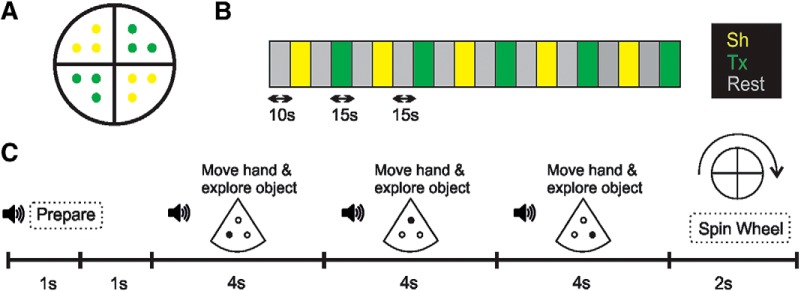Figure 1.
Stimuli and procedure used in the localizer task. A, Stimuli: rotating tray with three objects (shapes: yellow) or three textures (green) in each quarter. Shapes were real 3D objects: pen cap, thread spool, eye drop bottle, clothespin, bottle cork, and mini pencil. Textures, ∼4 × 4 cm, were corduroy, cork, sackcloth, sandpaper, sponge, and scourer. B, Block design for the single run. The run comprised 10 haptic blocks (yellow-shape; green-texture) and began with a 10-s interval that was not analyzed. The order of the haptic blocks was alternated. C, Procedure for a haptic block. The block began with an auditory cue indicating that the haptic block would begin. After 1 s of silence, the first auditory cue indicated to the participant the first (of the sequence of three) stimulus and to palpate it. After 4 s of exploration, a second (and third) auditory cue indicated to move the hand toward and palpate the second (and third) stimulus. The hand always moved in the same direction when ranging from one stimulus toward the next one since the location of the stimuli was previously known. To conclude, an auditory cue instructed the participants to spin the tray (to prepare it for the next block) and rest.

